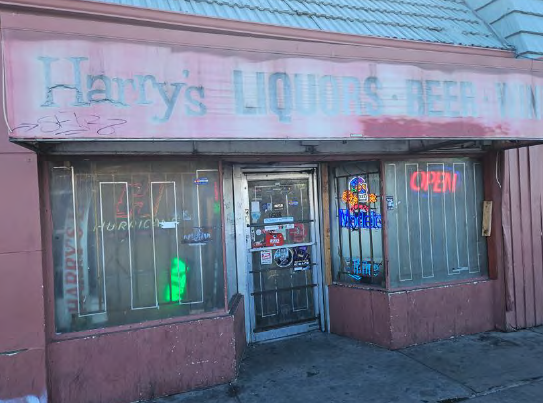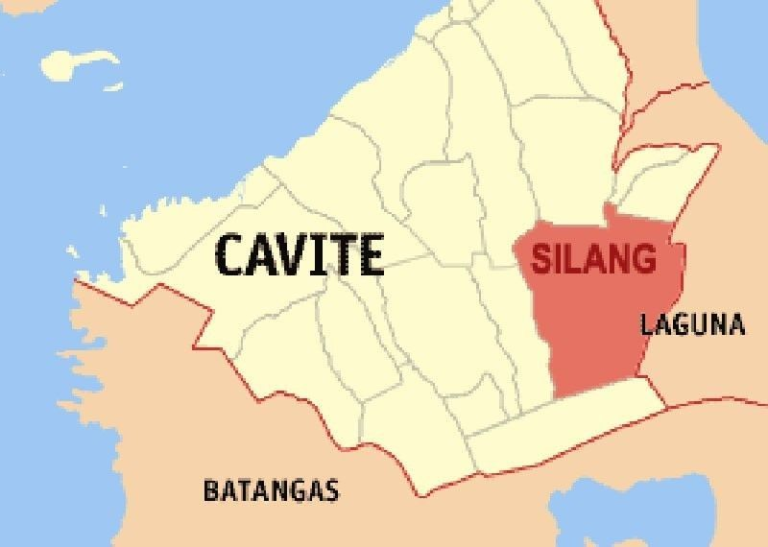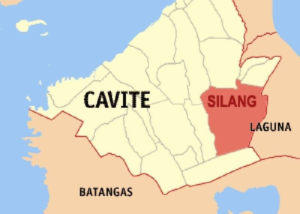The Sentinel not only cares deeply about bringing our readers accurate and critical news, we insist all of the crucial stories we provide are available for everyone — for free.
Like you, we know how critical accurate and dependable information and facts are in making the best decisions about, well, everything that matters. Factual, credible reporting is crucial to a sound democracy, a solid community and a satisfying life.
So there’s no paywall at SentinelColorado.com. Our print editions are free on stands across the region, and our daily email E-ditions are free just for signing up, to anyone.
But we need your help to carry out this essential mission.
The cost of producing top-notch journalism is steep. We need readers like you to become partners and help us. Even if it’s a little, it means a lot.
Join our mission by providing even a few dollars a month, or more if you’re able. Whether you can or can’t give right now, click here to subscribe to our free daily email E-ditions.
The Sentinel is owned and operated by the non-profit, 501(C)(3) community-led group Aurora Sentinel Community Media. That means your donation may be tax deductible.
If stories like the one you just read matter, help us keep the Sentinel here when you need us, for everyone. Join us now.
Donate one time or as an evergreen-sustaining member below. Just choose “One Time or Monthly” and fill out our fast, easy and secure form.
Thank you for your generosity and support for local Sentinel reporting.
Dave Perry
Editor and Publisher
Sentinel Colorado
The Sentinel not only cares deeply about bringing our readers accurate and critical news, we insist all of the crucial stories we provide are available for everyone — for free.
Like you, we know how critical accurate and dependable information and facts are in making the best decisions about, well, everything that matters. Factual reporting is crucial to a sound democracy, a solid community and a satisfying life.
So there’s no paywall at SentinelColorado.com. Our print editions are free on stands across the region, and our daily email E-ditions are free just for signing up, to anyone.
But we need your help to carry out this essential mission.
Please help us keep the Sentinel different and still here when you need us, for everyone. Join us now, and thank you.
Sign up for our free Sentinel email E-ditions to get the latest news directly in your inbox.
Sentinel Colorado
The source for greater Aurora, Colorado
AURORA | City lawmakers this week delayed taking formal action on a proposed “Socioeconomic Impact Permit” that would regulate the density and operations of certain businesses linked to blight and crime in lower-income neighborhoods.
Sign up for our free newsletter to receive the latest news
Sign up for our free newsletter to receive the latest news
It’s part of a growing effort to regulate retail development and public safety along aging city corridors such as East Colfax and Havana.
“When you have these concentrated sales and services that are targeted, sometimes called poverty industry or predatory economics, towards lower-income or historically disadvantaged communities, it gives you a feeling of social disorder and blight,” Trevor Vaughn, manager of licensing and finance, said during a Public Safety, Courts and Civil Service Policy Committee meeting in September.
The proposed Socioeconomic Impact Permit would apply to certain retail operations, such as liquor stores, vape and smoke shops, pawnshops, payday lenders and extended-stay motels.
It was presented to the city council on Monday, but continued for additional questions for the next study session.
Research has correlated that when such businesses are clustered together, they can contribute to blight, public safety concerns, and negative economic outcomes when heavily concentrated in specific neighborhoods, according to Trevor Vaughn, manager of licensing and finance, who presented the permit during a Public Safety.
“The approach in this is to attach it to the general business license to make it very seamless, as far as for existing businesses,” Vaughn said. “So a lot of this is primarily dealing with distance restrictions. There are some additional rules, and we are trying to address what we call areas of elevated risk, so areas that have a lot of crime and a lot of correlation with the data.”
The city is using what’s called Crime Prevention Through Environmental Design (CPTED), which can guide how a city builds out and redevelops, Vaughn said during a safety meeting in September, using the proper design, effective use of the built environment to reduce the incidence of crime and fear of crime and improve the quality of life.

CPTED can involve building maintenance, lighting, and clear boundaries such as fencing and signage. It also includes open landscaping to make it hard for people to commit crimes and filling vacant lots with green spaces or businesses. The concept uses many of the same concepts promoted in a Business Improvement District or a Downtown Development Authority.
The new permit is modeled after so-called equity-based land-use policies recommended by the American Planning Association’s Equity in Zoning Guide, Vaughn said, which encourages cities to prevent the over-concentration of “health-compromising” businesses in historically disadvantaged areas.
City building officials referred to Permitted Use Policy No. 11, which recommends that communities “revise permitted use regulations to reverse the overconcentration of convenience stores, cannabis outlets, safe injection sites and other facilities that provide easy access to health-compromising substances like alcohol and tobacco in historically disadvantaged and vulnerable communities.”
In the section, the zoning permit use suggestion is based on attracting more “healthy food” businesses for the rules of Equity in Substantive Zoning Regulations.
Although there is not much research on enforcing the spacing of a group of different businesses to prevent crime, there are some studies for individual business types.
Liquor and cannabis stores are already zoned and limited in Aurora, and when they aggregate near each other, have been linked to crime nationwide, city officials say.
Early research in four separate studies has found a correlation between tobacco vape stores and crime, which is comparable to that of liquor stores and crime, according to a 2018 study, “The geography of crime and violence surrounding tobacco shops, medical marijuana dispensaries, and off-sale alcohol outlets in a large, urban low-income community of color.”
Councilmember Danielle Jurinsky, who sponsored the ordinance, has been working with Vaughn to create a way to deter businesses that she says attract crime and, in turn, can contribute to urban decay in areas around the city.
Jurinsky said the intent is not to punish existing stores, but to prevent new clusters of targeted businesses from forming.
Existing businesses would be automatically “grandfathered in” and issued a permit alongside their regular business license, at no initial cost.
New applicants would face spacing and operational requirements based on CPTED principles, Risk Terrain Modeling (RTM), a data-driven method that maps areas of elevated crime risk and Place Network Investigations (PNI) which is a strategy that involves collaborations between police departments and community stakeholders to reduce and prevent crime in micro-places by using intelligence-driven efforts to uncover and disrupt the criminal networks within these areas, according to Vaughn.

Vaughn compared different areas of the city and compared the Havana Gardens’ spaced out businesses like convenience stores and liquor stores, and their lack of crime to places like Peoria, Mississippi, Havana and Colfax.
“These liquor stores have a role to play, not saying they don’t belong, saying that concentrating them may have an unhealthy impact,” Vaughn said.
He then showed the closer spacing of vape shops, liquor stores, rent-to-own and convenience stores in Mississippi and Peoria. When Councilmember Steve Sundberg asked what crime was occurring there, Vaughn said that there were two shootings in the northeast corner of the intersection and a liquor store was robbed. Three of the businesses in the northeast block were also selling drug paraphernalia.
The area is also a police “hot spot,” he said.
Critics of the concepts and a move to make changes question what is “causation” and what is “correlation” among the aspects of the research and details.
The draft ordinance establishes several separation rules according to Vaughn:
• No new businesses of the same type within 2,000 feet of one another (e.g., liquor store to liquor store).
• No “Socioeconomic Impact Business” within 300 feet of another such business.
• No “Socioeconomic Impact Business” within 1,000 feet of an extended-stay motel.
• No “Socioeconomic Impact Business” within 500 feet of a major transit hub, such as a light-rail station or large bus junction.
• No Socioeconomic Impact Business” in a retail center with more than 50% vacancy or visible blight.
Bars, hookah lounges and event businesses operating after midnight would not be subject to spacing limits but could still be evaluated under operational standards, Vaughn said.
The city identified an estimated 350 businesses that could fall under the ordinance, including 131 convenience stores that sell alcohol or tobacco, 85 liquor stores, 59 vape or smoke shops and smaller numbers of pawnshops, payday lenders, and rent-to-own stores.
Vaughn said they added a new “healthy small grocery store” exemption to encourage greater access to fresh produce and healthy food options and to prevent food deserts. They plan to use language that distinguishes them from grocery stores, by defining vape shops as stores where 15% of their floor space or 50% or more of the store’s sales come from vape or smoke shop products.
Specialty second-hand shops will be excluded from the second-hand regulations because the city doesn’t want to discourage thrift, fashion, comics or collectible stores, Vaughn said.
The measure is structured as an operations permit rather than a zoning amendment because it deals with dynamic factors like crime risk and business behavior, Vaughn said.
“One thing that I wanted to highlight of this, which you and I both agreed on, was that any existing businesses will not pay for this permit initially,“ Jurinsky said.
The city is also exploring the purchase of Risk Terrain Modeling software, estimated to cost about $24,000 annually, to identify and track areas identified as high-risk. A small biennial permit renewal fee of approximately $130 per business could be charged to cover that expense, according to the packet.
“We would, upon approval of this, automatically issue permits to existing businesses at no cost,” Vaughn said. “We are proposing that, to fund Risk Rate Modeling, we could charge $138. We’re set about $138 on biannual general license, business license renewals, and we may have a funding source for at least the first year of that.”
The proposal pairs with Aurora’s recently adopted derelict property ordinance, which targets neglected commercial sites and is intended to further pressure landlords to reinvest in aging shopping centers.
Jurinsky said that the “grandfathered” businesses would still be monitored through the derelict buildings ordinance, and if that business were to ever have to close, the location would be subject to the new permitting that is being proposed.
Vaughn explained that even if a company is grandfathered in but problematic, the city can revoke permits through its code enforcement. This can be done by using violations, including patterns of neglect or public nuisance violations, such as over-serving intoxicated customers.
They can also require the establishment to follow an operational plan if it is in an area of elevated risk or if operations are discontinued for longer than six months.
With one liquor store, Vaughn said the city was able to leverage a violation by making the store “clean itself up.” Plexiglass windows, excessive window signage, and poor sign conditions were all code violations listed by Vaughn that the city could address.
Some of the issues city council members brought up included how they decided which companies were included and considered “unhealthy, or “undesirable.”
Sundberg said that the corner of Havana and Colfax had many desirable businesses in years past, including Walgreens, a Walmart, and a Little Caesars, yet the intersection still went downhill.
“It’s a case study, and you can still have these desirable businesses, and then things just go downward so quickly,” Sundberg said. “I guess just one thing to keep in mind.”
Councilmember Curtis Gardner said he completely disagreed with the ordinance and said that people engaging in illegal activities will continue to do so regardless of any restrictions enforced. If there is crime happening around the businesses, the city should just address the crime, he said.
“We need to let the market work, and just simply telling these businesses where they can and can’t go, it’s not going to, all of a sudden, lead to something more ‘desirable,’” Gardner said. “Creating another law when individuals have already demonstrated they will not follow the law does not address the root cause.”
Councilmember Alison Coombs also had concerns with a few different aspects, including the Risk Terrain Modeling, its utilization, and ensuring that the city’s assessment is not discriminatory. She also didn’t understand what the limitation bars were and how the city was deciding who was included. Jurinsky said that with bards, Vaughn would be closely examining the locations where bars are looking to open.
Jurinsky said additional permitting for bars wasn’t as necessary because of the amount of licensing a bar already has to obtain to open.
Coombs said she was also confused why not all gas stations were not included with convenience stores, since they have the highest environmental impact, since the permit is based mainly on businesses that impact health and safety. Jurinsky said she was more open to that concept and looking into other environmentally hazardous businesses like dry cleaners, too.
2 Comments
here she goes again. She says: Councilmember Danielle Jurinsky, who sponsored the ordinance, has been working with Vaughn to create a way to deter businesses that she says attract crime and, in turn, can contribute to urban decay in areas around the city.
Jurinsky said the intent is not to punish existing stores, but to prevent new clusters of targeted businesses from forming.
I’m all for cleaning up Colfax and bringing in new construction and new businesses. Just be honest with the voters.
A quick google suggests: Retail stores that sell primarily alcohol and tobacco are associated with an increased prevalence of neighborhood crime, but medical cannabis dispensaries are not, according to data published online ahead of print in the journal Preventative Medicine. I suggest curbing the sale of alcohol to lower violence and crime??? People still seem willing to buy a pack of cigs for $10 or $100 a carton ($10 x 10).
Also note that Juan Marcano tried unsuccessfully to get this started but was pushed out of City Politics. Now? DJ supports: The American Planning Association (APA) is committed to Equity, Diversity, and Inclusion (EDI) in all forms of planning. They advocate for public policies that create just and healthy communities, ensuring that all individuals have equal opportunities to live a safe and prosperous life. The APA supports various initiatives and case studies that demonstrate the application of these principles in practice, such as the Hannibal Square Community Land Trust, which focuses on walkability and homeownership for Black communities.
American Planning Association
ALL FOR DEI (so am I) But I’ll bet the conservatives on the council don’t know this.
For more detailed information on the APA’s commitment to EDI, you can visit their official page on Equity, Diversity, and Inclusion.
Sorry but this story really highlights the serious damage that the Denver Scientific and Cultural Facilities District has inflicted on Aurora and the Colfax corridor in particular. The photo alone… priceless.
Colfax would have evolved much differently had our elected officials made a reasonable effort at an equitable distribution of the SCFD tax dollars collected in Aurora. Instead, over 90% has gone to supporting other cities’ culture and nightlife. We pay over $8 million per year to the Denver SCFD and after 37 years, we have the Fox Theater to show for our investment?!?! Ponder that for a second.
We can fully blame Colorado party leadership — both Dem and GOP — for this Ponzi scheme. Aurora is just as entitled to nice things despite the PR that drips with a feigned Stockholm Syndrome. You hear it every time you hear a local official making excuses that ring of the “we’re not worthy” sentiment or ” no one will ever come to Aurora” or “Aurora can never compete for regional entertainment.” Real or fake, this sentiment has zero value in planning Aurora’s future. None. We are a gateway city to DIA with enduring strengths in highway accessibility yet we fear taking advantage because of why exactly?
Fact: Danielle Jurinsky, Watson Gomes and Amy Wiles are the only candidates for city council brave enough to call out the Denver SCFD and plot a better course for Aurora. The others seem content continuing Denver’s economic sodomy.
Bringing this back to the topic at hand, does anyone really think these Impact Permits will make any difference so long as Aurora offers no reason to visit, dine or shop here? This permit initiative really seems performative.
I say this as a brutally pragmatic Independent not beholden to any party and who rejects the Stockholm Syndrome being faked by many of the officials elected to represent Aurora. Enough excuses. Enough bickering. Execute a strategy — or get out of the way.
Your email address will not be published.
Contact us: webmaster@aurorasentinel.com
Sign in by entering the code we sent to , or clicking the magic link in the email.
By signing up, you agree to our Terms and Conditions. This site is protected by reCAPTCHA and the Google Privacy Policy and Terms of Service apply.





Leave a Comment